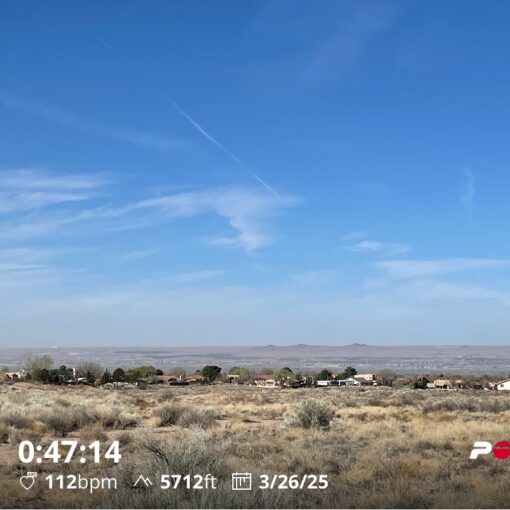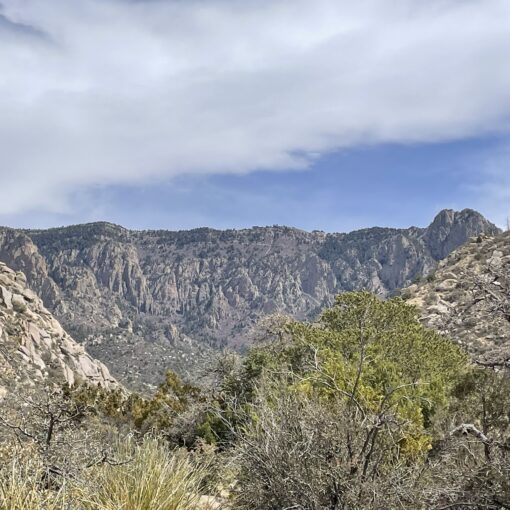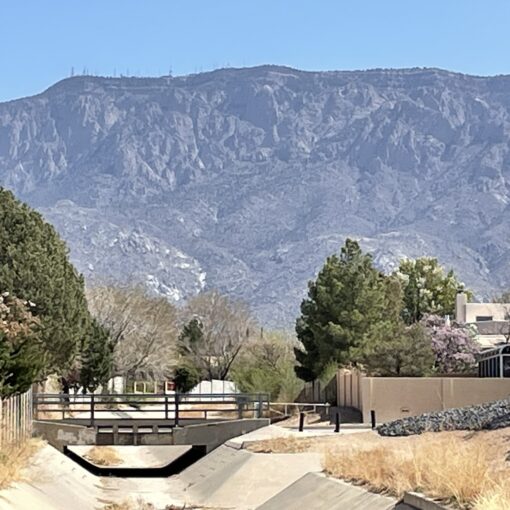The week of April 5th, 1982 was my first full week of training recorded in my “Runner’s Log”. It is my first full week of training since running in high school and at Rutgers in the 70’s. Between 1973 and 1982, I played soccer in Princeton, NJ and ran some and also lived in Colombia and Guatemala. I came back at the end of 1980 after living in Guatemala for almost five years. There, I ran some but mostly played soccer in a league with 360 players. I was the only North American playing. A year before I left Guatemala, I broke my wrist in a game, and when I returned to the United States, I realized that I needed to actually have my wrist partially fused because of the damage from the injury. I had the operation in January, and after three months in a cast that covered the surgery, it was removed, I started running. and got a subscription to The Runner Magazine. The running boom was in full swing, and as soon as I could run, I got fully caught up in it. Scroll down to read more about the running boom in the U.S.
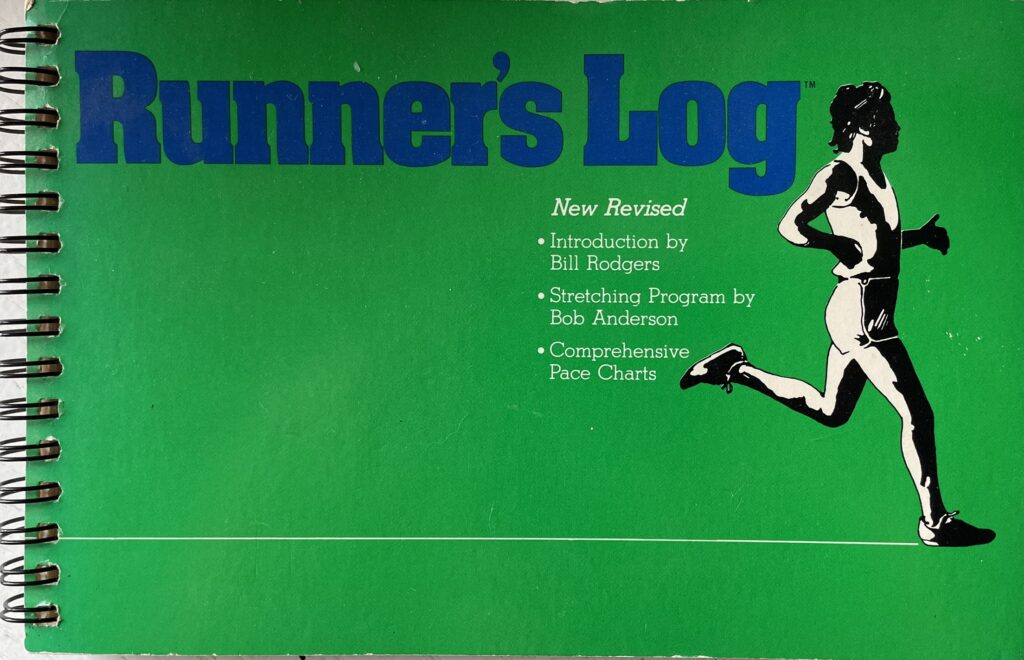
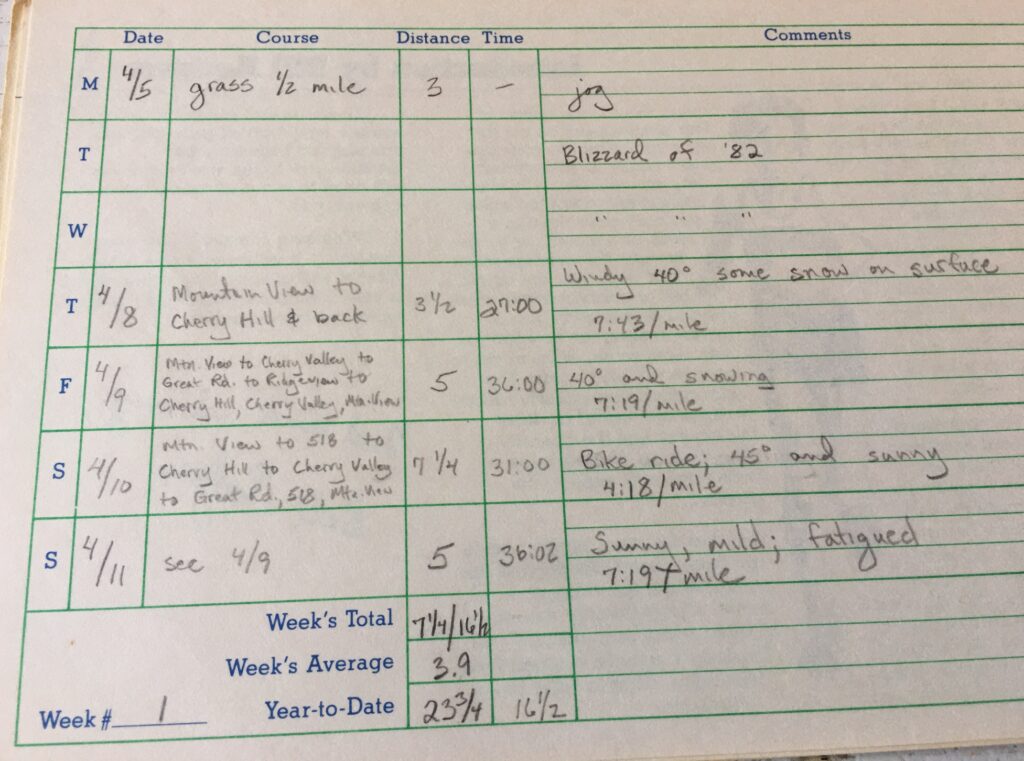
The Running Boom: How the 1970s and 80s Transformed the Sport
The 1970s and 80s saw an explosion of interest in distance running, a phenomenon that would later be known as the “Running Boom.” This era transformed the sport from a niche activity to a mainstream fitness craze, leaving an enduring legacy on running culture today.
The Roots of the Boom
While running had always been a competitive sport, it was largely confined to track and field athletes and hardcore road racers. That changed in the early 1970s, fueled by a perfect storm of cultural, health, and media influences. The publication of Dr. Kenneth Cooper’s Aerobics in 1968 laid the foundation, promoting cardiovascular exercise as essential for long-term health. Around the same time, Frank Shorter’s victory in the 1972 Olympic Marathon provided an inspirational figure for aspiring runners.
The Influence of Iconic Runners
Shorter wasn’t alone in inspiring the movement. Steve Prefontaine became a household name with his aggressive racing style and charismatic personality, drawing national attention to distance running. Meanwhile, Bill Rodgers dominated major marathons, winning the Boston and New York City Marathons multiple times. Joan Benoit Samuelson further fueled the running boom by winning the first-ever women’s Olympic marathon in 1984, paving the way for increased female participation in the sport.
The Rise of Road Races and Marathons
The running craze saw a surge in participation in local road races and marathons. The New York City Marathon, which began as a small race in Central Park in 1970, expanded to a five-borough event in 1976, helping to popularize the idea of the modern city marathon. Races like the Boston Marathon, once the domain of elite runners, saw a dramatic increase in amateur participation.
The Role of Running Shoes and Apparel
The growth of running coincided with advancements in running shoe technology. Companies like Nike, Adidas, and New Balance capitalized on the boom, designing shoes specifically for distance running. The introduction of cushioned midsoles, improved stability, and lighter materials made running more accessible to the masses. The newfound popularity also gave rise to a market for running apparel, including moisture-wicking fabrics and specialized gear.
A Lasting Impact
By the mid-to-late 80s, the initial surge of interest in running had begun to plateau, but its impact remained. Running had firmly established itself as a mainstream fitness activity, paving the way for future generations of runners. Today, the popularity of marathons, half-marathons, and fun runs can all be traced back to the running boom of the 70s and 80s.
From the Olympic victories of Frank Shorter and Joan Benoit Samuelson to the rise of mass-participation road races, this era transformed running into a sport for everyone. Whether you’re lacing up for a jog around the block or training for your next marathon, you owe a little bit of that journey to the running revolution of the 70s and 80s.
From ChatGPT
